I'm not sure if this counts as an answer, but I found easier to do the Königsberg Bridges graph using LaTeX and TikZ
This is the code:
\documentclass{article}
\usepackage{tikz}
\begin{document}
\begin{tikzpicture}[thick, main/.style = {draw, circle}]
\node[main,scale=0.6, label=left:$a$] (a) at (0,0) {};
\node[main,scale=0.6, label=left:$b$] (b) at (0,2) {};
\node[main,scale=0.6, label=left:$c$] (c) at (0,4) {};
\node[main,scale=0.6, label=right:$d$] (d) at (4,2) {};
\draw (a) -- (d);
\draw (b) -- (d);
\draw (c) -- (d);
\draw (a) to [out=120,in=240,looseness=1] (b);
\draw (a) to [out=60,in=300,looseness=1] (b);
\draw (b) to [out=120,in=240,looseness=1] (c);
\draw (b) to [out=60,in=300,looseness=1] (c);
\end{tikzpicture}
\end{document}
The resulted image is:

It's also possible to create a tex file using python, that way it's possible to use NetworkX too, this is the code:
import os
import networkx as nx
G=nx.Graph()
G.add_node('1', land="a") ## Land A
G.add_node('2', land="b") ## Land B
G.add_node('3', land="c") ## Land C
G.add_node('4', land="d") ## Land D
## Connected Edges
G.add_edge(1, 3) ## Bridge 1
G.add_edge(1, 3) ## Bridge 2
G.add_edge(1, 4) ## Bridge 3
G.add_edge(3, 4) ## Bridge 4
G.add_edge(1, 2) ## Bridge 5
G.add_edge(1, 2) ## Bridge 6
G.add_edge(2, 4) ## Bridge 7
with open('konigsberg.tex','w') as file:
file.write('\\documentclass[margin=1mm]{standalone}\n')
file.write('\\usepackage{tikz} \n')
file.write('\\begin{document}\n')
file.write('\\begin{tikzpicture}[thick, main/.style = {draw, circle}] \n')
file.write('\\node[main,scale=0.6, label=left:$' + G.nodes['1']['land'] + '$] (' + G.nodes['1']['land'] + ') at (0,0) {}; \n')
file.write('\\node[main,scale=0.6, label=left:$' + G.nodes['2']['land'] + '$] (' + G.nodes['2']['land'] + ') at (0,2) {}; \n')
file.write('\\node[main,scale=0.6, label=left:$' + G.nodes['3']['land'] + '$] (' + G.nodes['3']['land'] + ') at (0,4) {}; \n')
file.write('\\node[main,scale=0.6, label=right:$' + G.nodes['4']['land'] + '$] (' + G.nodes['4']['land'] + ') at (4,2) {}; \n')
file.write('\\draw (' + G.nodes['1']['land'] + ') -- (' + G.nodes['4']['land'] + '); \n')
file.write('\\draw (' + G.nodes['2']['land'] + ') -- (' + G.nodes['4']['land'] + '); \n')
file.write('\\draw (' + G.nodes['3']['land'] + ') -- (' + G.nodes['4']['land'] + '); \n')
file.write('\\draw (' + G.nodes['1']['land'] + ') to [out=120,in=240,looseness=1] (' + G.nodes['2']['land'] + '); \n')
file.write('\\draw (' + G.nodes['1']['land'] + ') to [out=60,in=300,looseness=1] (' + G.nodes['2']['land'] + '); \n')
file.write('\\draw (' + G.nodes['2']['land'] + ') to [out=120,in=240,looseness=1] (' + G.nodes['3']['land'] + '); \n')
file.write('\\draw (' + G.nodes['2']['land'] + ') to [out=60,in=300,looseness=1] (' + G.nodes['3']['land'] + '); \n')
file.write('\\end{tikzpicture} \n')
file.write('\\end{document}\n')
os.system("pdflatex konigsberg.tex")
running this code using Python3 and Ubuntu 20.04 generates the same graph




